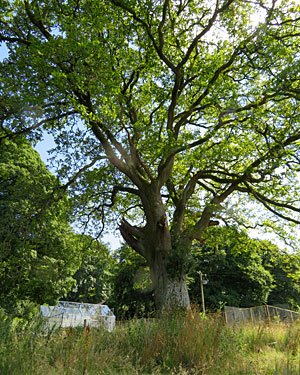
We are blessed with over eleven thousand trees on our property.
Most were planted under a grant funded forestry project about 6 years ago, but around 500 were mature trees that were already here when we moved in.
In fact some of these trees were probably here when the house was built in 1799.
Almost certainly the oldest trees here will be the mighty oaks. We have around 80 mature oaks on the property mostly around the boundaries.
There is one giant oak that stands by itself in the field in front of our house. It is a fine specimen with a girth of around 14 feet and probably well over 200 years old.
Although it has shed a few boughs in the storms over recent decades it still stands proudly and strongly dominating our view across the valley.
We treat it with great respect. This oak is part of the property. It has witnessed the life and death of every generation that ever lived in this place.
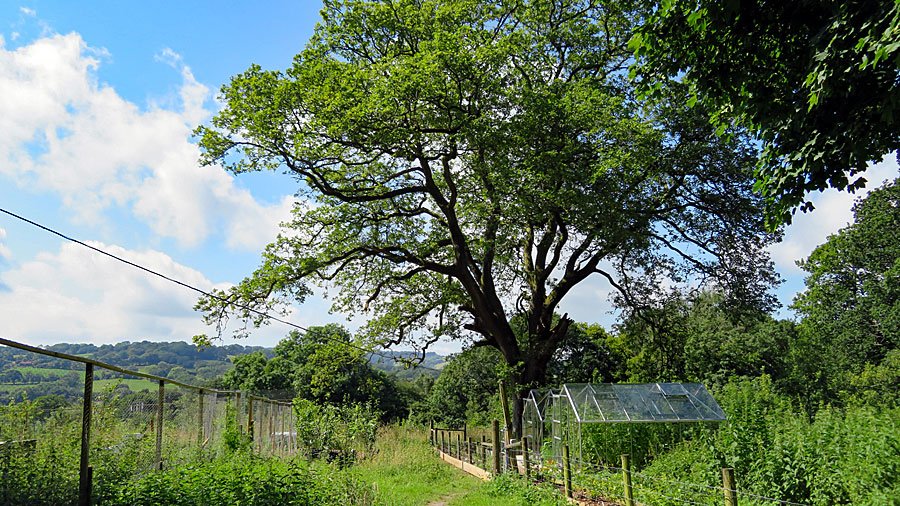
In homage and reverence to this oak we have built two greenhouses under its mighty limbs this summer. We put our trust in that oak. We will do it no harm. We hope it will return the favour.
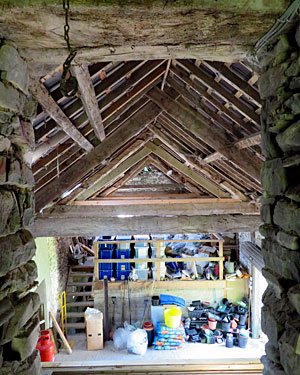
In the past the elders of its family have not been so lucky. Many I believe made the ultimate sacrifice and were cut down to provide the massive beams and rafters that form the wooden skeleton of our house and our barn.
I am sure my ancestral builders of this property would have used the green oak timber from this land.
To bring the massive oak timbers up our steep mountainside on a horse and cart would have been close to impossible.
So those oaks live on, no longer growing but still giving service supporting the structures of our life.
Up in our loft the oak beams remain rock solid. As well as supporting our roof they give a resting place to a little colony of pipistrelle bats that inhabit our attic.
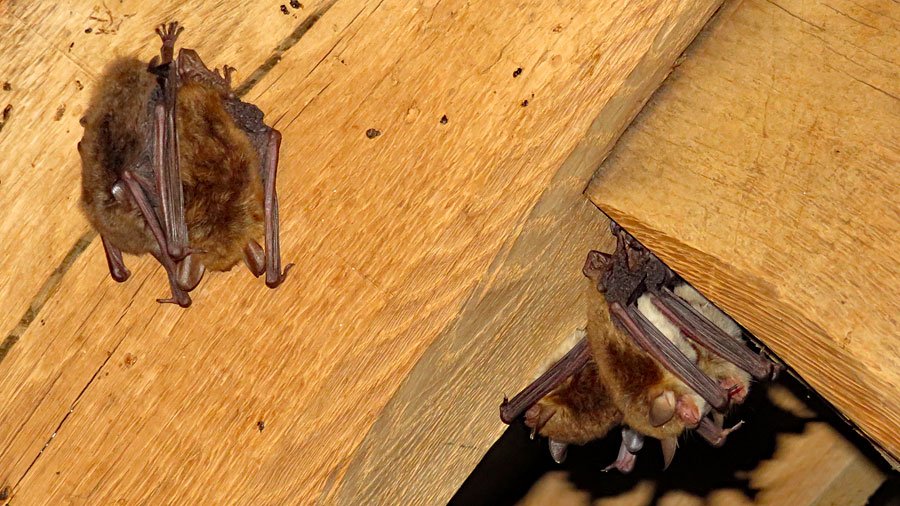
In our living room we sit under the exposed oak beams everyday as we eat our meals at the dining table. In the past this room served as the kitchen as well and a big hook remains in the beam where the curing bacon hams would hang.
This was common practice in old welsh farmhouses. I am often reminded of a visit to my great aunts when I was five. They had bacon hanging from the hook on the ceiling beam.
Seeing this for the first time, to the embarrasment of my Welsh mother and the laughter of my aunts, I proclaimed “Errrr, look, there’s mouldy bacon.”
I had not yet, at that young age, developed an appreciation for the traditional practices of artisanal bacon production.
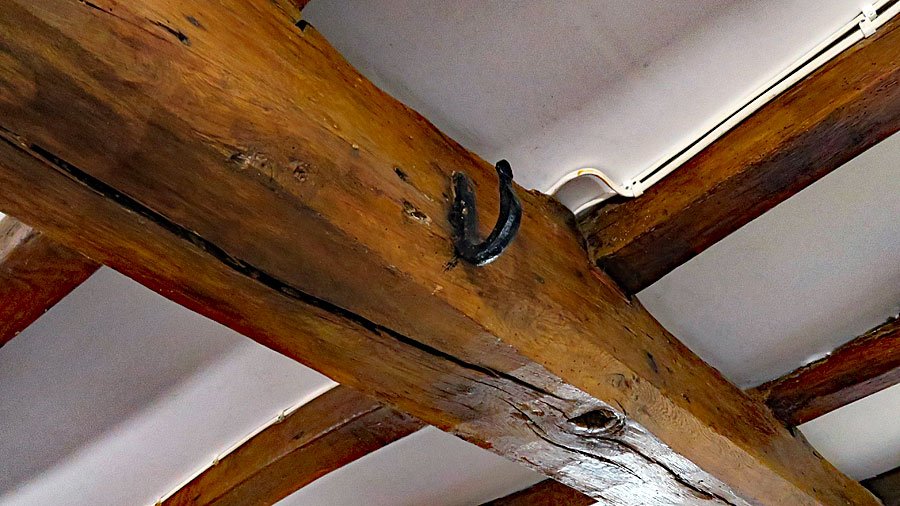
In the barn the oak rafters have not fared so well. The roof has not been kept in good repair and the rain has got through in places to wear down and rot the timbers. Very soon they will need to be replaced. The re-roofing of the barn is one of our priority projects for next year funds permitting.
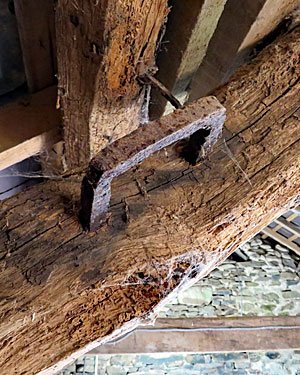
It would be grand if we could use oak from our land for the new roof. Alas I don’t think that will be practical and I don’t think I want to cut down more mature oaks at this time. We did have a couple taken down for safety reasons a few years back but unfortunately they were not stored well enough and have begun to rot now.
Future families here, in decades or centuries to come, will have the luxury of many more oaks to use as the need arises. Of the new planting here a few years ago around 1500 were oaks. Some will need to be thinned out over the coming years. But in a hundred years or so there will be another 500 mature oaks here.
What changes those oaks will see over the coming decades.
The young oaks are slower growing than the other species we planted like ash, wild cherry and beech but they still present their own particular facets of fascinating beauty.
While some of the other species of new tree now tower several feet above my head the young oaks still barely reach my eye line.
This allows me to get a little bit more up close and personal. I love the range of colour in their leaves.
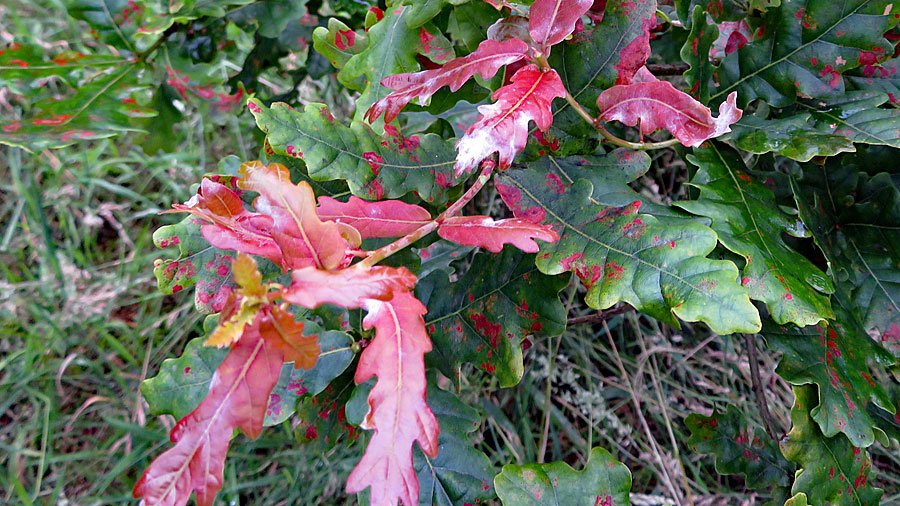
The oak is well known for supporting more species of insects and birds than any other tree, certainly in Britain.
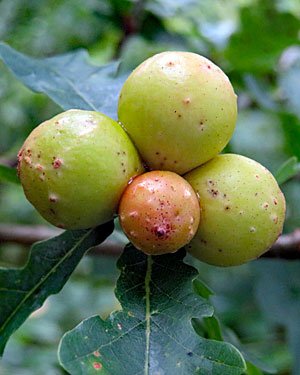
One of the most interesting inhabitants of the oak is the gall wasp.
There are around 30 species of gall wasps found on oak.
This one is probably the Oak marble gall wasp (Andricus kollari).
It is the larval stage of the wasp that induces the tree to produce the abnormal growths, known as galls.
When I was young I always thought the galls were acorns.
Oaks in fact don't produce acorns until they are around 40 years old.
Imagine if humans didn't reach sexual maturity until we were 40. That would help solve the population crisis.
Let me know in the comments below if you found this interesting. If you do I'll make this a regular series - we have plenty more trees here - ash, beech, holly, aspen, willow, chestnut, hawthorn... Take your pick.
[all images taken by @pennsif]
If you found this post useful or interesting please do upvote, resteem and follow. Thank you.
You might also be interested in some of my other recent posts :

